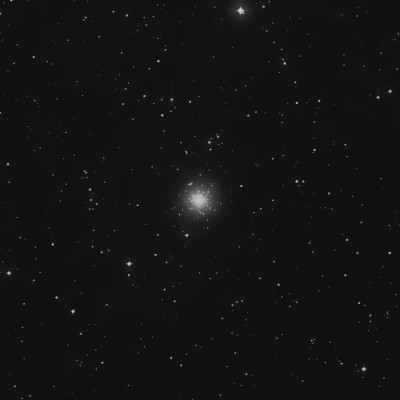
James Dunlop discovered NGC 2298 = D 578 on 8 May 1826 and described "a pretty bright round nebula, 3' or 4' diameter, moderately condensed to the centre. This is resolvable into stars." He made 6 observations and his published position is 6' W of center of the globular.
JH observed the globular (h3065) on four sweeps from the Cape of Good Hope, first recording it on 2 Feb 1835 as "B, R, gpmbM, 3', all resolved into stars 14th mag. In the centre is a star 13th mag."
200/250mm - 8" (1/1/84): no resolution, fairly small, smooth.
300/350mm - 13.1" (2/20/04 - Costa Rica): at 200x, this is a compact, fairly bright globular that is well-concentrated with a bright 1.5' core and a fainter halo of ~3' diameter. Roughly two dozen stars are resolved (brightest cluster members are mag 13.4) including several across the core and a number of stragglers, which are easier to resolve in the outer halo.
400/500mm - 17.5" (1/31/87): moderately large globular with no sharp core. A dozen stars are resolved over the mottled disc.
600/800mm - 25" (4/6/19 - OzSky): at 244x; extremely bright, large, highly resolved globular with an intensely bright 1.5' core and a scraggly 4' halo. Due to a fairly loose structure and brighter members, the cluster was well resolved into more than 50 stars. A number of fairly bright stars are plastered across the core and the halo contains a few dozen brighter stragglers. A noticeable chain of stars begins in the core and extends southwest. A brighter star (double) is near the edge of the halo on the NE side.
Notes by Steve Gottlieb